The Rise of VTubers 2023: Virtual Creators in the Streaming Space

This report is a follow-up on our last article on The Rise of the VTuber:

First of All... What is a VTuber?
Short for “Virtual YouTuber”, the phrase has grown to encompass all creators portrayed by character avatars to capture real time movement. While the trend originated in Japan during the mid-2010s, this novel technology has since become an international phenomenon. The success of VTubers can be seen as a synergistic combination of Japanese idol culture, such as AKB48, and otaku anime fan culture.
VTubers, unlike real idols, often hide their real identity, enhancing audiences’ immersions of the character they perform as on stream, allowing for anonymity and privacy.
With this layer of separation, they’re able to fully invest in their distinct brand identities and personalities without being barred by stringent expectations often placed on celebrities in real life.
While Anime-style VTuber character rigs are the driving force of the industry, VTubers are not limited to any certain art style. Many streamers create avatar rigs of their own style, whether that’s 3D, cartoon, or a completely abstract character. Many creators even represent themselves with small pictures that move when they talk, calling themselves “PNGTubers” for days they don’t want to turn their cameras on. Many streamers also use PNG avatars to represent their friends on their streams, like LilyPichu.
What is the state of the VTuber market?
- There are over 49,500 active VTubers live streaming on Twitch and YouTube Live Gaming! Breaking it down, there's 37.3K channels on Twitch and 12.2K on YouTube Live Gaming.
- VTubers outpace traditional streamers in terms of growth on both Twitch and YouTube Live.
- While VTubers represent a minority of 0.4% of active channels, they make up a higher percentage of viewer hours watched at 5.7%.
- On average, VTubers have higher audience engagement than non-VTubers on Twitch – 48% to 52%.
- VTuber fans are excited to help their favorite streamers grow and generate a huge amount of fan content.
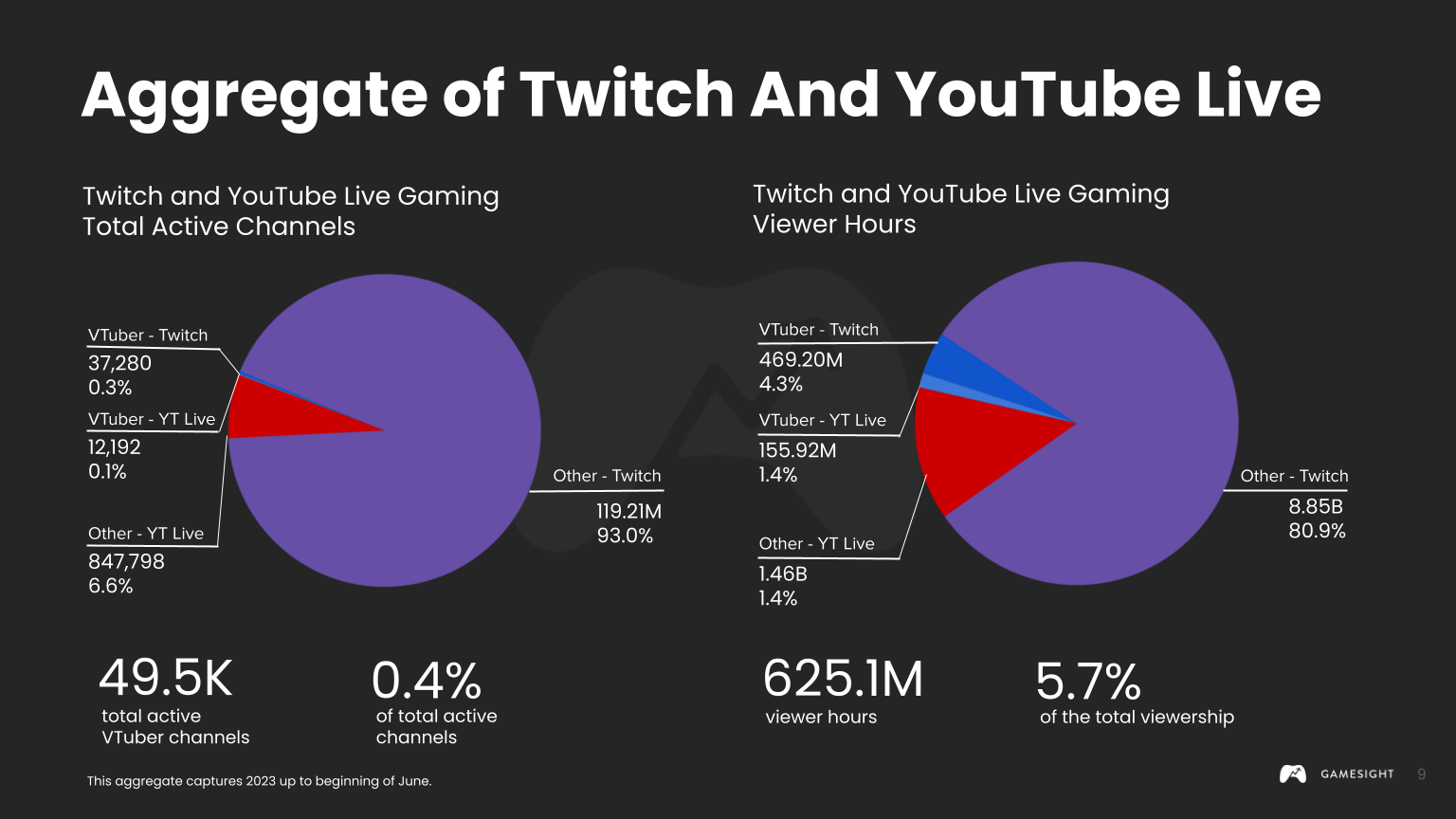

What are the Different Types of VTubers?
VTubers can be broadly classified into corporate and independent. While both types share the essential commonality of using a virtual character rig to represent themselves online, there are significant differences in levels of management including: terms of recruitment, company backing, character licensing, content ownership rights, networking opportunities, revenue splits, and audience reach.
Corporate Vtubers
For corporate VTubers, companies own the rights to their talent’s names, lore, images, likenesses, and content made. To get cast by companies like hololive and NIJISANJI, aspiring VTubers go through a competitive audition process to get contracted and debut. Companies invest significant resources into their VTubers, with long term marketing strategies and objectives.
There has also been a rise of brand-affiliated VTubers promoting products and engaging with the consumer base, such as Netflix’s N-Ko, Crunchyroll’s Hime, Tony the Tiger, and SEGA’s very own Sonic and Tails.
Independent (Indie) VTubers
Independent VTubers manage their own content, create and commission their own character rigs, and grow their own community without corporate affiliation. However, this does not make them any less professional. Many indie VTubers get contracted by talent agencies like Mythic Talent and VShojo. Unlike traditional VTuber corporations, these agencies do not own the legal rights to their content, instead helping their talent find deals and help with legal matters when applicable.
When did VTubers Start Getting Popular?
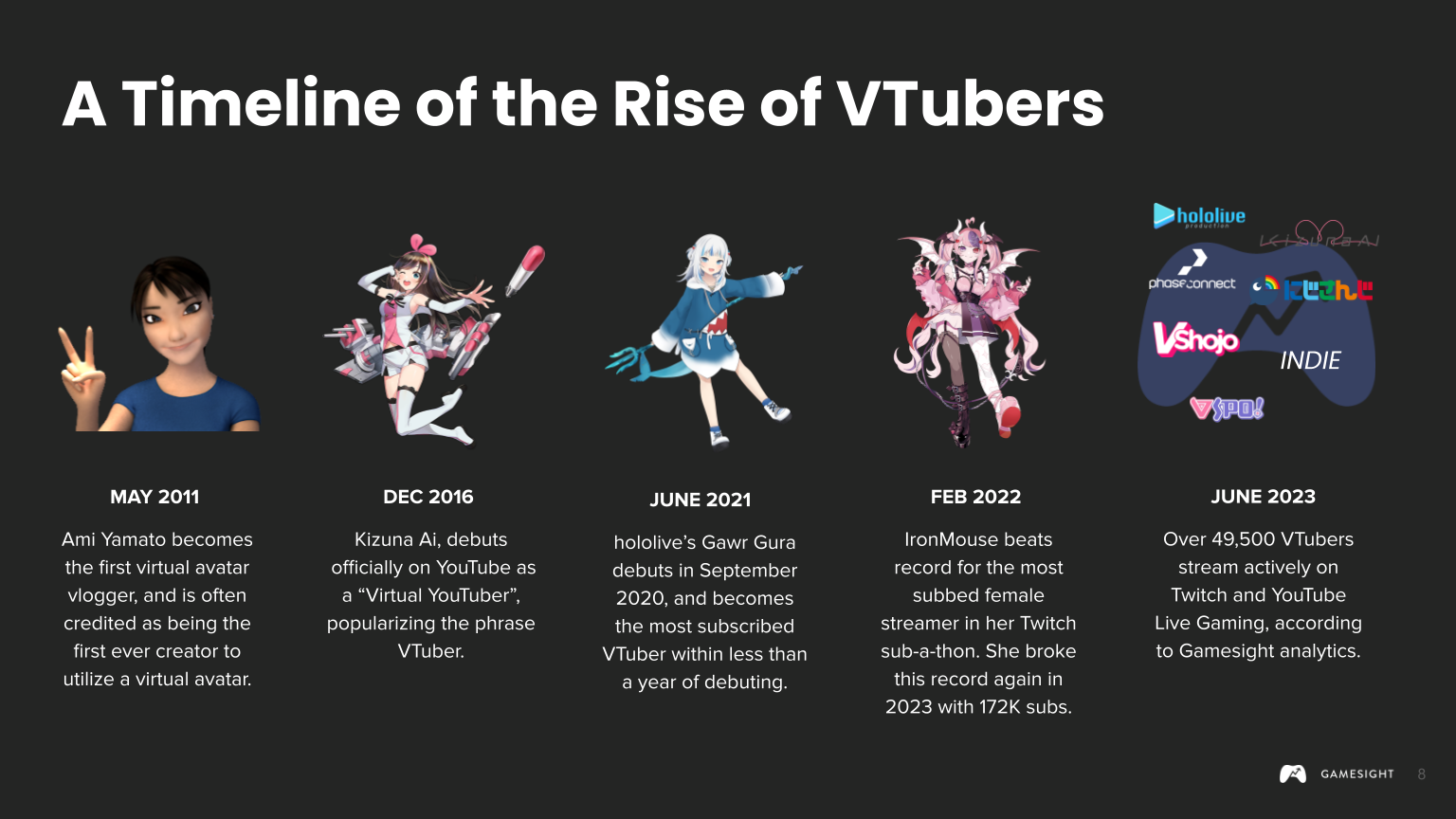
Ami Yamato is widely credited for being the first creator to utilize a virtual avatar in 2011. In 2016, Kizuna Ai donned the title of "Virtual YouTuber," becoming the first modern age VTuber. VTuber agency Hololive took the internet by storm, proven by the instant success of Gawr Gura's debut in 2021 when she became the number one most subscribed VTuber within a year. Creator IronMouse continues to break records during her Twitch sub-a-thons, beating the record again in 2023 with 172K subs. As of 2023, Gamesight has documented over 49.5K VTubers that stream actively on Twitch and YouTube Live Gaming.
How are VTubers Doing on YouTube Live vs Twitch?
VTubers on YouTube Live Gaming
In 2023 up to June, VTubers consisted of 1.4% of the active YouTube Live Gaming community, and 9.6% of all viewer hours. VTubers grew in viewership by 28%, while non-VTubers decrease by 6%. There are 21.6K active YouTube Live Gaming VTuber channels, and 2.5K active VTuber fan channels that upload clips.
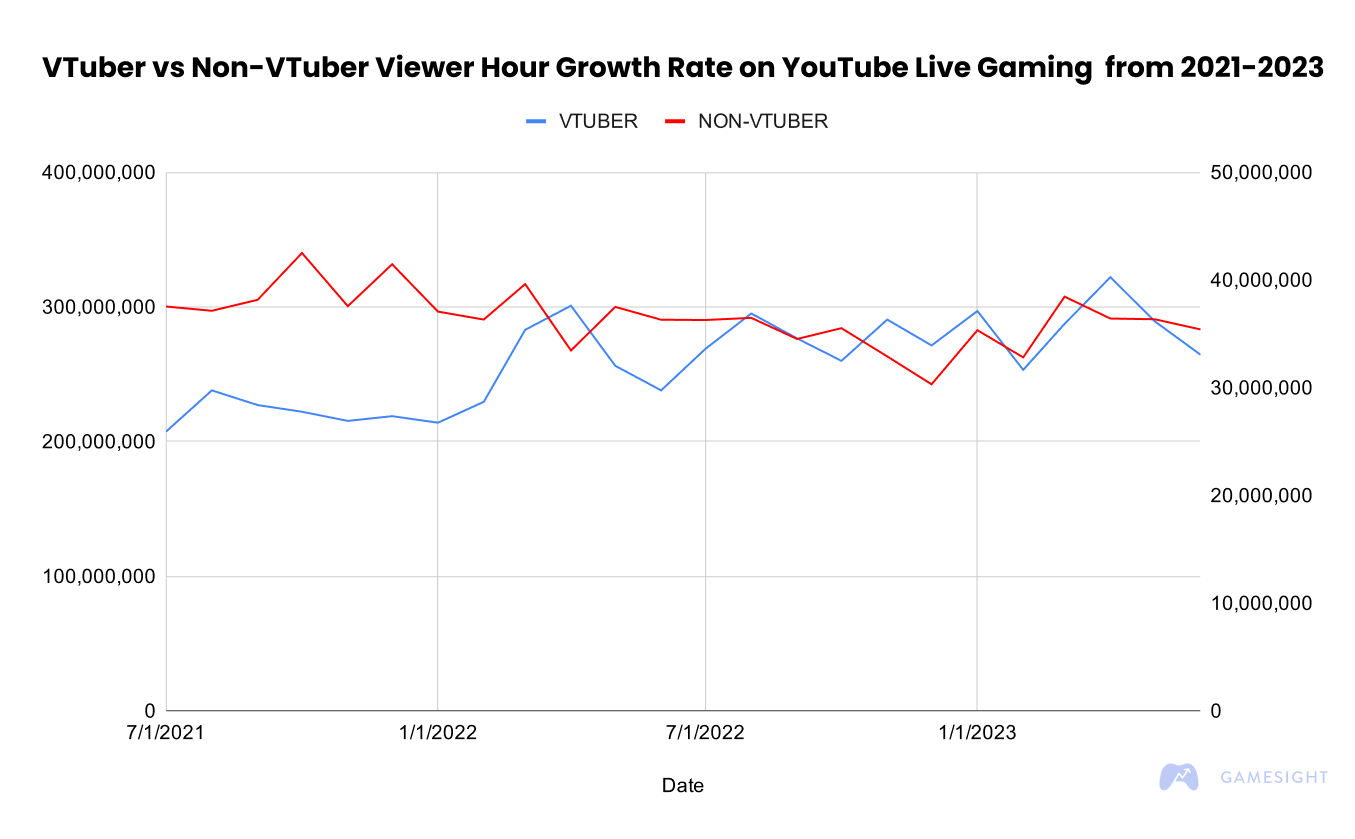
VTubers on Twitch
On Twitch, they consisted of 0.3% of the community and represented 5% of all Twitch viewer hours. VTubers also enjoyed 52% of engagement compared to 48% of non-VTubers. Audience engagement is defined as when a viewer watches the stream for more than 20 minutes. VTuber viewership grew 515% from October 2017 to 2023, compared to non-VTubers' 200% growth rate.
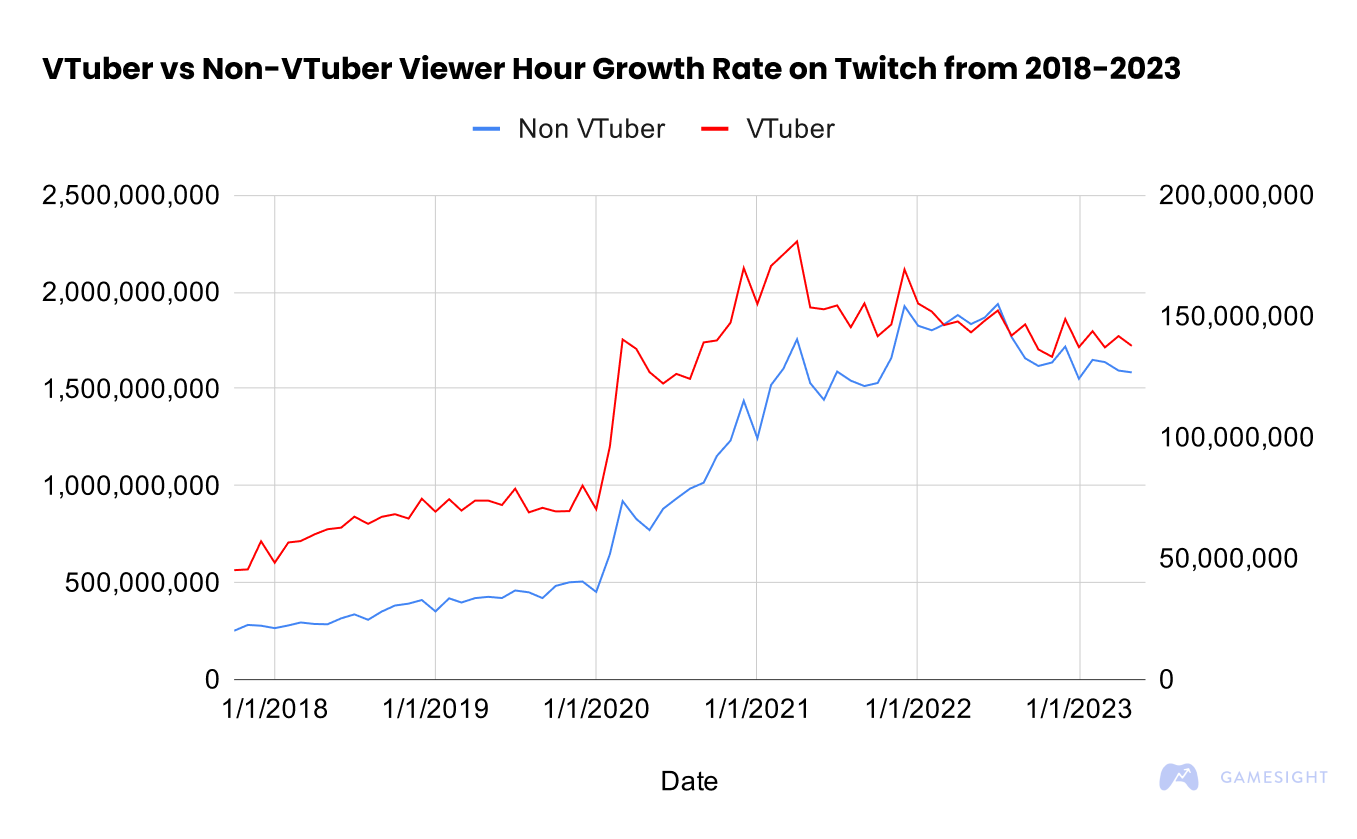
What are VTubers Top Streamed Categories?
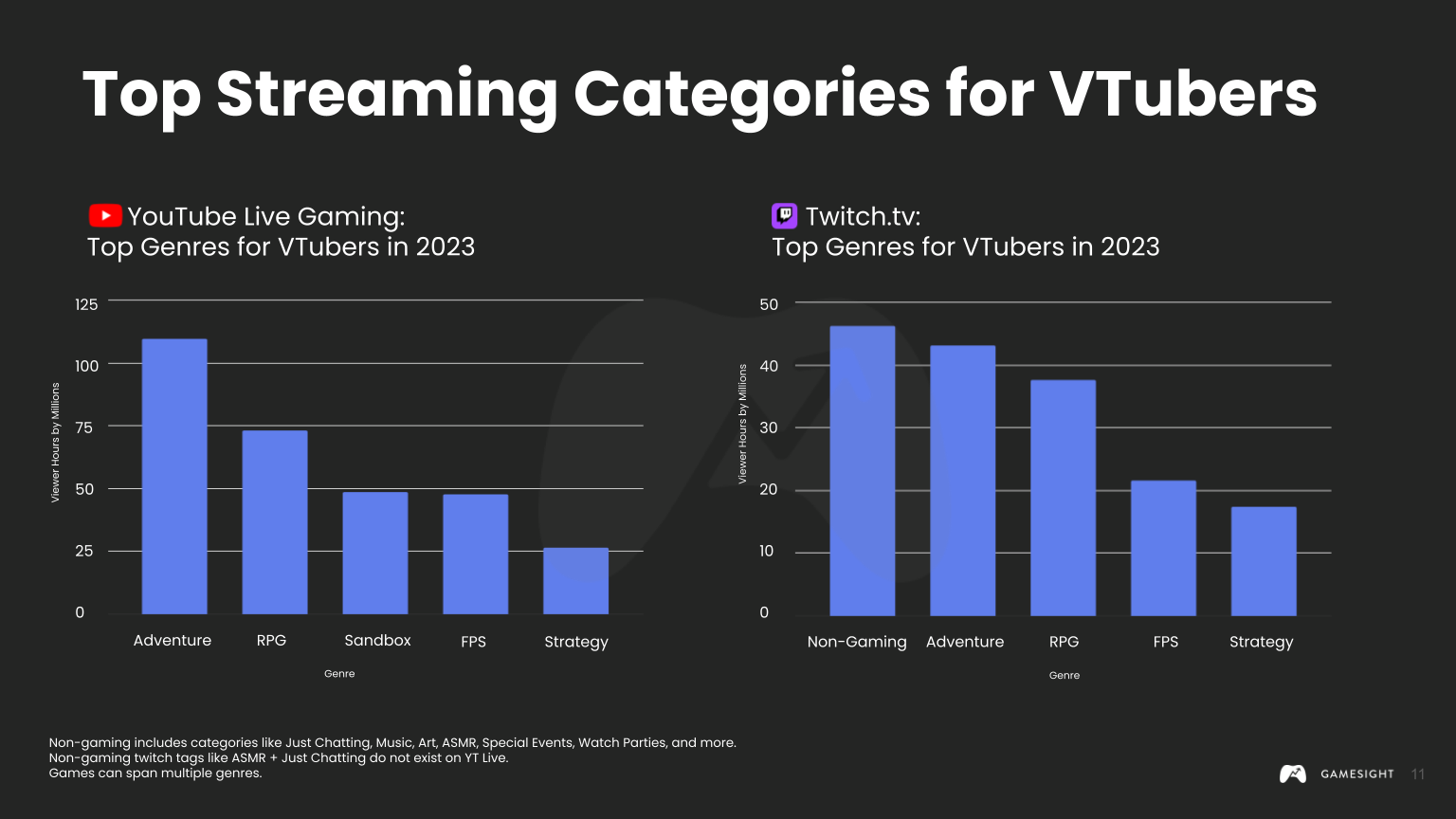
On YouTube Live Gaming, VTubers enjoyed adventure, RPG, and sandbox games, with the top 3 being Minecraft, Apex Legends, and Pokemon.
On Twitch, VTubers enjoyed the non-gaming category, adventure, and RPG games, with the top 3 being Just Chatting, VRChat, and ASMR.
We're excited to provide the numbers on how far VTubers have come since our last check-in, and we'll continue to look forward to how VTubers dominate the world of digital entertainment.
To dive more into the exclusive statistics behind Twitch and YouTube Live, check out our free 2023 report on the state of VTubers.





